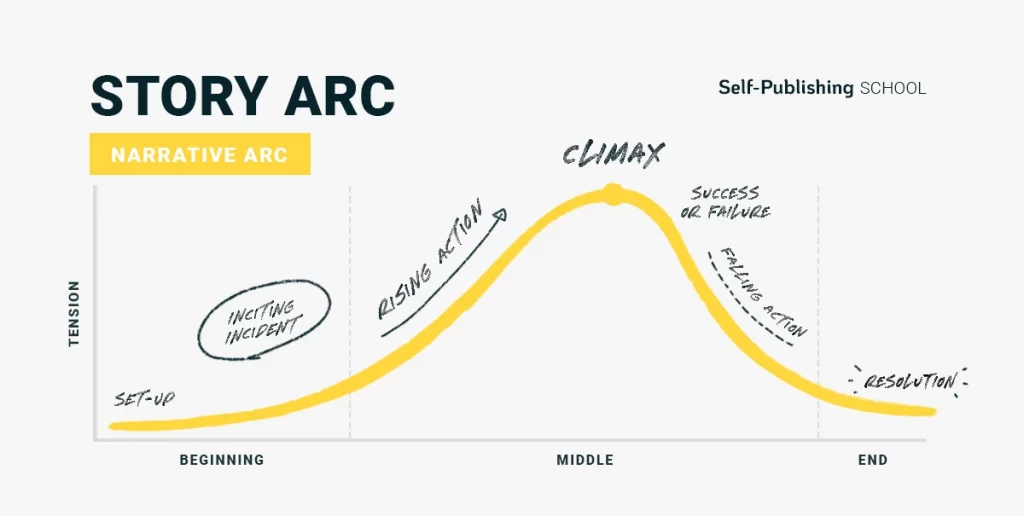Your salespeople can do everything right on a sales call, but it’s all for not if they don’t have the tools to close the deal. Talk about frustrating, am I right?!
Selling is to closing as Hemingway is to Monet. Both an elegant art, but very different in approach, form, and function. Where selling is a lucid dance, closing is jujitsu.
While sales posers see objections as rejection, loss, and pain, true closers see objections for what they really are – OPPORTUNITY! Closers get a hit of dopamine the moment an objection hits. Objections trigger an instant response to stand and fight for what’s right. To close the deal that they are 100% CONVINCED is the right solution for the buyer.
Closers aren’t pushy, but they are persistent as all get out.
Why?
Because they have a secret weapon to close the sale.
Enter, the Closing ARC.
If your sales team only has a few ways to handle objections, ask for the sale, or maneuver when a customer complains, lies, objects, stalls, makes an excuse, or rejects them, they will run out of closing runway before they get the plane off the ground.
Closers have literally hundreds of micro scripts ready to deploy for any of the 6 ways a person objects to buying. These are what I call Closing ARCs.
Like any narrative arc, a Closing ARC is the transition from the sale to the close of the sale. It happens right at the end of the sale, after you have:
- set up the sale
- identified the needs
- created the right solution
- selected the specific solution
- reviewed configuration and payment options
and now you are attempting to get the commitment to buy.
Closing ARC defined
A Closing ARC is made up of 3 fundamental elements that are repeated over and over again until the sale is closed. Based on the premise that you have indeed ascertained the RIGHT solution for your customer (that your customer agrees to as well), a Closing ARC is the framework that has you going back one more time to get past the smoke, and ink onto the contract.
To close more deals today, build a Playbook of micro scripts that follow the Closing ARC.
AGREE
You will never get someone to change their behavior before you have changed their tightly held beliefs. The first step in eliciting a new behavior is to AGREE with your prospect.
Birds of a feather flock together, and people who agree on things feel a sense of belonging. When a person feels like they’re amongst their tribe, they are going to do things that are socially modeled in the tribe.
Even if the words out of your prospect’s mouth are utter nonsense, there is always a way to agree with what they chose to say. When your team realizes that they said it for a reason, typically as some kind of defense mechanism, they will understand that the Ego has no home here.
REBUTTAL
When said with a smile, eye contact, and confidence, you can say pretty much* anything to a person. Rebuttals are a way to transition from the thing you just agreed with and shift the perspective of the potential buyer to taking the plunge.
When you say something new, interesting, and different, you are challenging a specific area of the brain called Broca’s Area. This is the gatekeeper of the imagination. All the usual nonsense that your competitors are saying won’t get past Broca’s Area. Your team has to be ready, willing, and able to quickly respond in a way that helps the prospect make a new decision.
Changing a person’s mind is a myth. Creating a safe space for a new decision is real. In the science of hype, this is where your logic hooks come into action. Surprisingly, many of the things that seem logical when suggested, are the furthest thing from logic. Done well, you’ll find that your emotionally-charged justifications are the best lubricant for closing the deal.
You see, the goal at this point is to cause a spark. Create a chemical reaction in the prospect’s brain to ACT! Your team needs to know just how much friction to apply to get ignition.
When they produce a spark, it’s time to:
CLOSE
Agree, rebuttal, close. Agree, rebut their objection, then ask for the sale.
In a study performed by AMEX, participants were sent into stores with a literal limitless budget on their AMEX card. The goal was to see how often a salesperson would ask for the sale.
In 63% of cases, the participant left the store having purchased nothing, and the average amount purchased was $2200 from those salespeople who were brave enough to ask. Unbeknownst to them, they could have sold their entire inventory had they just kept asking for the sale.
People are riddled with limiting beliefs, and salespeople are, strangely enough, made of people. When we train our salespeople to operate like Navy Seals, instinctively doing whatever is necessary (for all the right reasons) to complete the mission, we will see a meteoric rise in conversions, average sale, and profit (High CAP).
When you have asked for the sale, and you’ve handled all of their complaints, lies, objections, stalls, excuses, and rejections, just do one more thing. Ask again.
And again, and again, and again.
If you’re convinced you’re selling them the RIGHT thing, you’re unapologetically persistent, not pushy.
Closer or Poser?
We do not serve our clients at the highest level by having conversations. We ONLY serve our clients by CLOSING THEM. Until there is an exchange of goods and services with money, all we are doing is consuming their (and our) time and energy.
No one gets paid. No one gets their problem resolved. More time has to be wasted. More negative energy is produced for a job left undone. Nobody wins.
It is our duty as sales professionals to present the right solutions for our clients and CLOSE THE DEAL. When we creatively approach their root issues from a variety of different angles, we may be mistaken as persistent. If we continue to try clubbing our prospects over the head with no new, interesting, or different positioning, we are branded pushy.
Closers are persistent. Posers are pushy.
So, are your people Closers or Posers?
Good Selling!
* Keep it family-friendly. Keep sex, drugs, and political and religious debate off the table.


